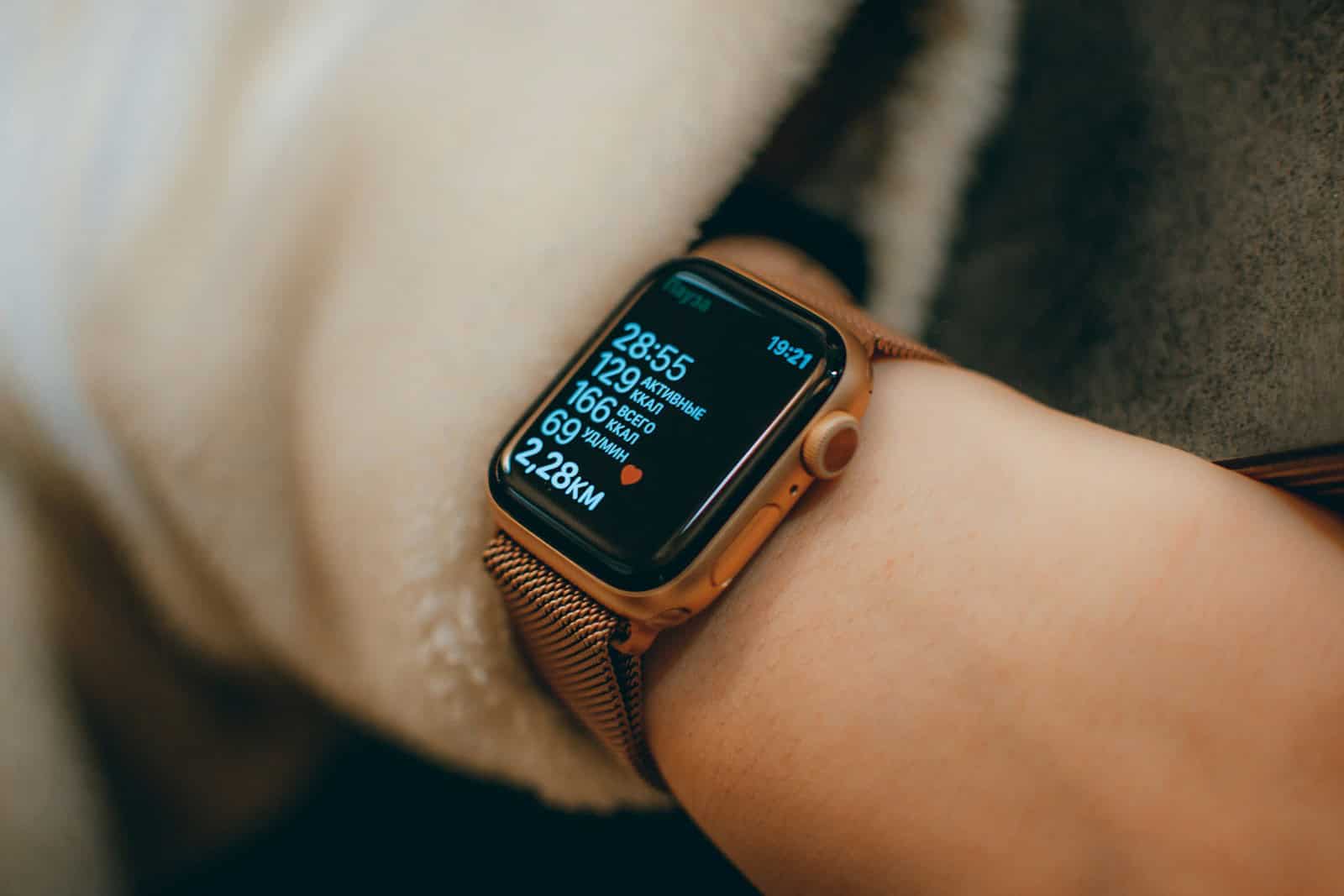The Apple Watch isn’t just a smartwatch—it’s become a lifestyle device. From fitness tracking to phone-free convenience, Apple’s wearable continues to top the charts in user satisfaction, outselling its competitors by a wide margin year after year. But what exactly keeps people coming back to the Apple Watch? Here’s a comprehensive look at what makes it so popular among a wide variety of users.
Health & Fitness: A Personal Wellness Coach on Your Wrist
For many, the Apple Watch serves as a personal health companion. It goes beyond counting steps by offering powerful health tools that rival some medical-grade equipment:
- Heart Rate Monitoring: Tracks your heart rate continuously and alerts you if it detects irregularities.
- ECG App: Allows users to take electrocardiograms (available on Series 4 and later, excluding SE).
- Blood Oxygen Monitoring: Measures oxygen saturation levels, helping identify potential health issues.
- Sleep Tracking: Provides insight into your sleep quality and trends over time.
- Activity Rings: The Move, Exercise, and Stand rings gamify your daily movement goals.
- Workout Detection: Automatically detects a range of workouts, including running, cycling, yoga, and swimming.
- Fall & Crash Detection: Alerts emergency services if you take a hard fall or are in a severe car crash and don’t respond in time.
These features have led many users—especially those in Reddit communities like r/AppleWatch—to report that the device has helped them detect serious health conditions early or maintain consistent exercise habits.
Seamless Integration with the Apple Ecosystem
One of the biggest strengths of the Apple Watch is how well it works with the rest of Apple’s lineup:
- Instant Notifications: Get texts, emails, calls, and alerts right on your wrist.
- Unlock Your Mac: Automatically log in without typing a password.
- Control Apple TV & Music: Use the Watch as a remote or music controller.
- Continuity Features: Start a message on your iPhone, finish it on your Watch, or hand it off to your Mac.
Because it syncs effortlessly with iPhones, AirPods, iPads, and Macs, the Apple Watch is essentially a natural extension of your digital life.
Convenience: Little Things That Make a Big Difference
The Apple Watch shines when it comes to everyday tasks that become easier and faster:
- Apple Pay: Tap to pay at stores, transit stations, or vending machines.
- Siri on the Wrist: Set reminders, ask questions, or control smart devices.
- Navigation: Get discreet, wrist-based turn-by-turn directions using haptics.
- Find My Tools: Locate your iPhone, AirPods, or other Apple devices quickly.
These subtle conveniences are often cited in user reviews as surprisingly impactful over time, especially when multitasking or on the go.
Personalization: Make It Yours
The Apple Watch is one of the most customizable tech products on the market:
- Watch Faces: Choose from digital, analog, modular, and even animated designs.
- Complications: Add widgets like weather, calendar, heart rate, or timers to your watch face.
- Bands: Swap bands easily—from sporty silicone to premium stainless steel or leather.
This customization makes the Apple Watch not only practical but also stylish, appealing to both tech enthusiasts and fashion-conscious users.
Motivation Through Gamification
Apple has mastered the art of motivation. Features like:
- Monthly Challenges
- Badges for Milestones
- Activity Sharing with Friends
- Fitness+ Integration
help keep users engaged. Whether it’s closing rings or beating a friend’s step count, these game-like incentives make staying active feel rewarding—and sometimes addictively fun.
Safety That Goes Beyond Fitness
The Apple Watch offers peace of mind with safety tools that few competitors can match:
- Fall Detection: Uses accelerometers and gyroscopes to detect hard falls.
- Crash Detection: Alerts emergency services after severe car accidents.
- Emergency SOS: Press and hold the side button to contact help instantly.
- Medical ID: First responders can access your critical health info from the lock screen.
These features have real-life implications, with numerous testimonials online of the Watch helping save lives or provide assistance in emergencies.
Leave the iPhone at Home (With Cellular Models)
For runners, bikers, or people on the move, the cellular versions of the Apple Watch allow for complete independence:
- Make Calls and Texts
- Stream Music or Podcasts
- Use Maps and Siri
- Access Emergency Services
This freedom is a game-changer for people who want connectivity without the bulk of a phone.
Quick Comparison of Current Models (2025)
| Feature | Apple Watch Series 9 | Apple Watch Ultra 2 | Apple Watch SE (2nd Gen) |
|---|---|---|---|
| Display | Always-On Retina | Always-On Retina (brighter) | Retina (no Always-On) |
| Case Size | 41mm / 45mm | 49mm | 40mm / 44mm |
| Materials | Aluminum, Stainless Steel | Titanium | Aluminum |
| Chip | S9 SiP (gesture support) | S9 SiP | S8 SiP |
| Battery Life | 18 hours | 36–72 hours | 18 hours |
| Water Resistance | 50m | 100m + EN13319 dive certified | 50m |
| Health Sensors | ECG, Blood Oxygen, Temp | ECG, Blood Oxygen, Temp | Heart Rate Only |
| Safety | Fall, Crash Detection | Fall, Crash Detection | Fall, Crash Detection |
| Navigation | Compass + Backtrack | Compass + Backtrack + Depth | Limited |
| Cellular Option | Optional | Standard | Optional |
| Starting Price (USD) | $399 | $799 | $249 |
In short, the Apple Watch is more than a wearable—it’s a health tool, productivity assistant, personal motivator, and fashion statement all wrapped in one. While no device is perfect (battery life is often cited as a limitation), most users agree that once you’ve lived with an Apple Watch, it’s hard to go back.
How to Turn Off an Apple Watch Step by Step: Quick Shutdown Guide
Turning off an Apple Watch may seem simple but it’s an important skill for any user. Whether you need to conserve battery life, troubleshoot, or simply prepare your wearable tech for storage, powering down correctly ensures the device remains in good working condition. This step-by-step guide provides clear instructions to turn off your Apple Watch efficiently and safely without compromising its performance.
Occasionally, the Apple Watch may require a restart to maintain optimal functionality. If the watch is unresponsive, a force restart is a safe process that can be used as a last resort. Knowing these procedures gives users the control to manage their device effectively, giving peace of mind and enhancing the overall experience with their tech accessory.
Key Takeaways
- Turning off your Apple Watch helps conserve battery and maintain performance.
- Preparing your device for shutdown includes ensuring it is not on its charger.
- The shutdown process is straightforward with step-by-step actions.
Preparing to Turn Off Your Apple Watch
Before turning off your Apple Watch, it’s important to understand when it’s appropriate to do so and to check the watch’s battery levels. These steps ensure that you turn off your device safely and at a time that won’t interrupt its normal usage.
Understanding When to Turn Off
Turning off an Apple Watch is not part of the daily routine for many users. You should turn off your watch to conserve battery life when it won’t be used for an extended period. Turning off the watch can prevent unnecessary battery drain. It’s also wise to turn it off before updates or when troubleshooting.
Checking Battery Levels
Before turning off your Apple Watch, ensure its battery isn’t critically low. If it is, it’s better to put it on the charger first to avoid issues when turning it back on. Here’s how to check the battery:
- Swipe up from the bottom of the watch face to open the Control Center.
- Look for the battery percentage at the top.
If the battery icon is green, your watch has a good charge. If it’s red, your watch needs charging before it can be safely turned off. Remember, it’s important to charge your Apple Watch to avoid battery issues.
Step-by-Step Shutdown Process
Turning off an Apple Watch involves a few simple steps that require the use of the side button and the power off slider. These actions will safely power down your device.
Accessing the Power Off Menu
To start the shutdown process, the user must first wake the Apple Watch. This can be done by lifting the wrist or tapping the screen. Once the watch is awake, the side button located below the Digital Crown on the watch’s right side should be pressed and held. A screen will appear with the power off slider.
Using the Physical Buttons
The side button is integral to the shutdown process. After accessing the power off menu, the user keeps holding the side button until the slider appears on the screen. There’s no need to interact with the Digital Crown at this point.
Confirming the Shutdown
Once the power off slider is visible, the user should slide it to the right to initiate the shutdown. The screen will then go dark, signaling that the shutdown is in progress. The Apple Watch will turn off completely once the Apple logo disappears from the screen.







